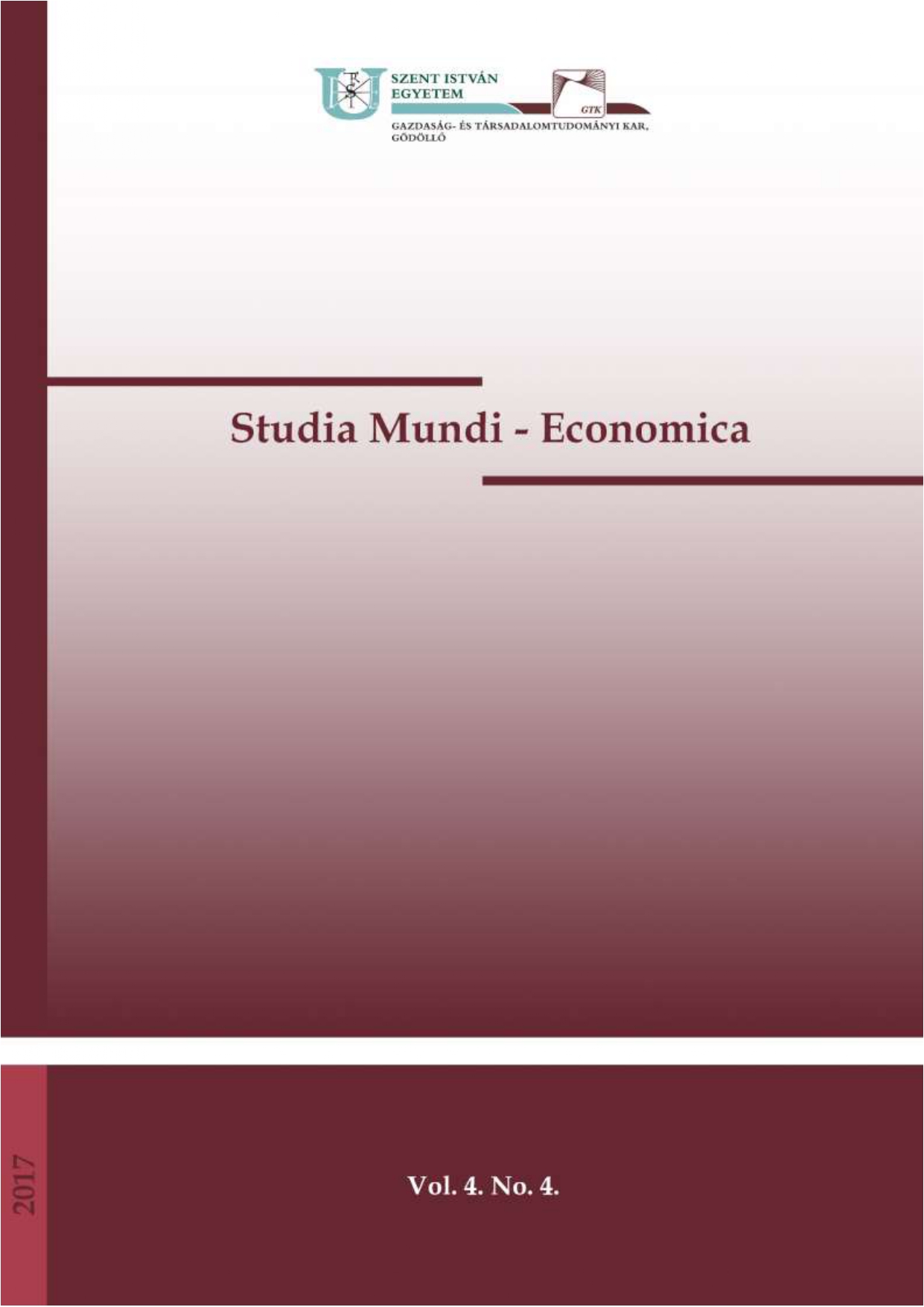Marketing opportunities of the hungarian organic producer
DOI:
https://doi.org/10.18531/Studia.Mundi.2017.04.04.59-68Kulcsszavak:
pasture, fruit and vegetable, animal keeping, local market, Short Food Supply ChainsAbsztrakt
The improvement of the organic farming is a basic aim of the national agricultural policy for years. The new CAP 2014-2020 also strengthen the central role of organic agriculture in the fight against climate change, the protection of the environment and the preservation of biodiversity. The organic farms are usually small scale enterprises so their development also relating to the improvement of the Short Food Supply Chains which is supported in the frame of the Rural Development Programme. According to the abovementioned the aim of this article to reveal the limiting factors in the marketing of the Hungarian organic farming. To achieve this aim we made a survey on the biggest Hungarian organic market, on the Biokultúra Organic Market and processed the information stemming from the producers' list published on the homepage of the Hungarian Federation of Associations for Organic Farming (Biokultúra Szövetség). The results of our survey showed that the limiting factors of the domestic sale are the market barriers for new entrants providing of stable quantities and the high production costs. In addition, the interviewed farmers emphasized that the foreigners trust better in their producers and the local market organization is stronger as well than in Hungary.
Hivatkozások
Balázs B. (2012) Local Food System Development in Hungary. International Journal of Sociology of Agriculture and Food, 19:3, 403-421.
Balázs, B., Bertényi, G., Králl, A., Pintér, L., Strenchock, L. (2015): PATHWAYS project Exploring transition pathways to sustainable, low carbon societies, January 2015.
Drexler, D., & Dezseny, Z. (2013). Organic Agriculture in Hungary–Past, Present, Future. The World of Organic Agriculture-Statistics and Emerging Trends 2013, 239- 241.
Fertő, I., & Forgács, Cs. (2009): The choice between conventional and organic farming. A Hungarian example, Applied Studies in Agribusiness and Commerce – APSTRACT Agroinform Publishing House, Budapest
József Káposzta, Krisztián Ritter, Zsuzsanna Kassa (2015): Examination of the territorial significance of Pálinka as a Hungaricum, Tér és Társadalom, 29. évf., 4. szám, 2015, DOI: https://doi.org/10.17649/TET.29.4.2707
Meredith, S., & Willer, H. (2014): Organic in Europe PROSPECTS AND DEVELOPMENTS, IFOAM, 2014
Solti, G. (2012): A hazai ökogazdálkodás és a biokultúra válsága, a kilábalás lehetséges útjai. Ökológiai Mezőgazdasági Kutatóintézet (OMKi), The Domestic Situation of Organic Farming-Trends and Breaking Points. Budapest, February 2012.
Roszík, P. (2008): Legyen jövedelmezőbb a biogazdálkodás. A Magyar Mezőgazdaság és Kertészet és Szőlészet melléklete V. évfolyam, 8. szám, 8. p.
Strenchock, L. (2012) Local Food Systems in Budapest: Citizen Driven Conscious Food Consumption Initiatives to and their Ability to Shape New Food Paradigms in Hungary. Master’s Thesis: www.etd.ceu.hu/2012/strenchock_logan.pdf
Willer, H., Lernoud, J., & Kilcher, L. (Eds.) (2013) The World of Organic Agriculture. Statistics and Emerging Trends 2013. FiBL-IFOAM Report. Research Institute of Organic Agriculture (FiBL), Frick, and International Federation of Organic Agriculture Movements (IFOAM), Bonn
Letöltések
Megjelent
Folyóirat szám
Rovat
License
Copyright (c) 2017 Kinga Nagy Pércsi, Amelita Kata Gódor

This work is licensed under a Creative Commons Attribution-NonCommercial-NoDerivatives 4.0 International License.
A folyóirat Open Access (Gold). Cikkeire a Creative Commons 4.0 standard licenc alábbi típusa vonatkozik: CC-BY-NC-ND-4.0. Ennek értelmében a mű szabadon másolható, terjeszthető, bemutatható és előadható, azonban nem használható fel kereskedelmi célokra (NC), továbbá nem módosítható és nem készíthető belőle átdolgozás, származékos mű (ND). A licenc alapján a szerző vagy a jogosult által meghatározott módon fel kell tüntetni a szerző nevét és a szerzői mű címét (BY).






